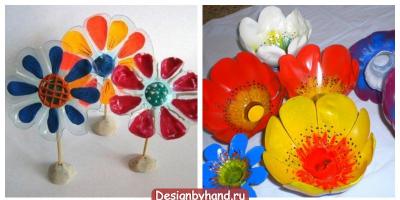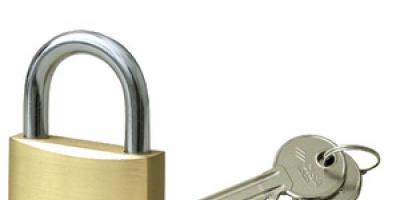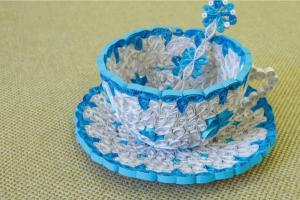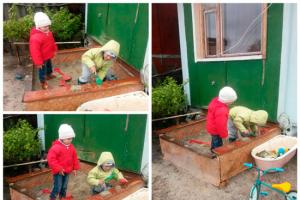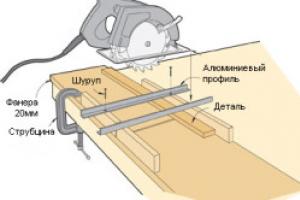Chain-link is a universal material. The mesh is used to create fences and fencing. Its use is not limited only as a material for the construction of buildings. The mesh is actively used in landscape design. You can use a manual machine to make a chain-link mesh with your own hands. To save money, you can build a homemade machine from available materials.
Required Tools
To create a hand-held apparatus for the manufacture of this product, you will need the following materials:
- metal in pieces;
- welding machine;
- file;
- rollers;
- sandpaper;
- bearing races;
- Bulgarian;
- plate;
- rope with chalk;
- metal corner.
The principle of operation of the machine is that the master guides the wire with one hand and rotates the machine handle with the other. When assembling, it is important to keep an eye on the spirals. They shouldn't get tangled.
Elements of a homemade apparatus
A standard manual machine for the production of chain-link mesh includes:
- knife-plate;
- tension device;
- base;
- shaft and handle on it;
- screw.

Main functions in homemade machine performed by a knife-plate and auger. Thanks to these devices, the metal wire is twisted into cells. Both devices give the desired size to the grid cells.
When the knife rotates, coils of the required size are formed. The screw is responsible for the distance between the resulting turns.
The base material for the manufacture of the auger is a steel pipe. A slot is made in it in the form of a spiral. The slot can be made using, for which you need to wrap the pipe with a rope in the shape of a spiral, outlining it with chalk.
The surface of the pipe must be thoroughly sanded. First, the surface is processed with a file, and then sandpaper. The length of the pipe should be such that the master can lay three turns of the strip. To simplify the process, it is possible to purchase a ready-made screw bushing.

The knife is fixed on a shaft, which is equipped with a rotating handle. Special attention is paid to the distance between the pipe and the knife. It should be 1 mm. The knife in the pipe should have free movement and protrude a few centimeters.
Two corners are cut for the pipe. Their length should be equal to the length of the pipe. Both corners are welded to the pipe on both sides.
It is necessary to secure the structure to the base. You will need to make holes in it through which the chain-link mesh machine will be fixed to the table.
Device device functions
A homemade machine for making chain-link mesh consists of four devices:
- lubricating;
- server;
- winding;
- tension
The lubricating device is fixed on a plate with rollers. Base for similar device is a bicycle pump.
The pump is mounted on the plate with the bottom up. The bottom is cut off, and the pump cover is easily fixed on the body, securing the plug in it. The plug is cut, and oil is poured into the pump. The edges of the pump are additionally strengthened with a bearing race.
The machine for the production of chain-link includes a feeding mechanism, which is based on industrial knitting equipment. A meter-long steel pin is fixed in the center of the base of the device. Two rods with a diameter of 10 mm are welded to it. A bearing with a ring and a driver is attached to the upper end of the pin.
The winding mechanism is a pipe with special spiral slots and a knife. The winding mechanism forms the desired cell size.
The tension mechanism of the device has the form of a right triangle, in which:
- a steel plate with holes for the rollers serves as the hypotenuse of the triangle;
- the remaining sides are made of steel angle.
Any machine for weaving mesh netting is installed on the table so that its handle can rotate comfortably.
To avoid tangling of the wire material during the manufacturing process of the mesh, it is necessary to place it on the pipe at one end and hang a load at the other. The end with the load is passed through tension rollers.
The machine for producing mesh mesh must be checked before starting work. The wire is inserted into the winding mechanism and scrolled. The output should be a string with cells correct form. The evenness of the line is checked along the weight. If there are obvious unevennesses in the line, additional adjustment of the machine rollers will be required.
The choice of wire material matters. More often, steel wire with a polymer or galvanized coating is used.
Regular steel wire needs to be painted because it quickly rusts when exposed to rain. Galvanized is more expensive, but already has the necessary protection against rust. Polymer is used as a basis for chain-link mesh, but has a high price.
The softness of the wire affects the type of knife used. If you plan to weave a chain-link mesh from soft wire, then take a flat knife. Hard requires the use of a knife curved around its axis. Stiff wire requires a larger bending angle.

Weaving technology
The scheme for weaving a chain-link mesh on a homemade machine includes drawings and steps based on them:
- the wire used is coated with machine oil or by using a special lubricating device on the machine itself;
- the wire end is bent with a hook;
- the product is pulled through the groove, secured to a knife inside the pipe;
- the shaft rotates due to the lever;
- the shaft is rotated until a waveform is obtained;
- the wire is divided into pieces required length;
- The wire is wound on an inverted bucket;
- 1.45 meters of wire gives 1 meter of chain-link mesh;
- before stretching the mesh, its parts are fastened to each other;
- the outermost wire is unscrewed, the ends of the chain-link are applied one to the other, the removed wire secures it;
- The finished bonded mesh is fixed to a fence or other object.
The tensioning and fastening of the chain-link is done with nails and slats. The stretched and secured mesh needs to be painted over with a brush. This will ensure complete penetration of the paint into the weave.
A wire mesh fence is better than any wooden picket fence. It lasts longer and does not shade the plants. The pillars for its installation can be anything: steel or asbestos-cement, reinforced concrete or, at worst, wooden. However, reinforced concrete pillars are not difficult to make yourself. The form for them will be an asbestos cement pipe. And so that the concrete does not stick to the walls, it is oiled from the inside. Holes should be made in the concrete in advance for installing anchor bolts and fastening the wire. After all, when the concrete hardens, it will be very difficult to hollow them out.
Now let's get down to the most troublesome task - making the wire mesh. The most common cell sizes are 80x80, 60x60 and 45x45 mm. Figure 1 shows the design of a simple device that will make our work easier. It is designed for a cell of 80x80 mm. To avoid tangling, the wire is thrown in concentric circles onto the feed drum - an inverted bucket placed on wide board. The position of the bucket is fixed with a weight. From the drum, the wire is fed to a piece of steel channel on which three rollers are installed. By changing the position of the central one, the tension force of the wire is adjusted. To make the rollers rotate more easily, restrictive washers 1-1.5 mm thick are placed on the bolts that serve as axles on both sides.
The wire prepared for weaving is wiped with a rag, generously moistened with machine oil, and directed into bending machine, mounted on a flat steel plate. The length of the slab corresponds to the height of the mesh. It is attached to a durable work table.
The machine itself (Fig. 1) is a thick-walled steel pipe, in which a knife made of solid strip steel rotates. A 4 - 5 mm spiral groove is cut into the pipe at an angle of 45 degrees to the axis. At a distance of 5 ohms from the edge of the pipe, the groove ends round hole. Pipe
Rice. 1 Machine for weaving mesh netting: 1 - knife; 2 - support; 3- shaft; 4 - pipe; 5 - base; 6 - corner.
The shaft should rotate freely, and the gap between the pipe walls and the knife should be 0.5-1 mm.
The work table is positioned so that the wire stretched at an angle flows upward onto the receiving drum. This may be a post to which a wooden shaft or pole is attached (Fig. 2).

Rice. 2 Diagram of the tension mechanism for weaving a chain-link mesh.
The weaving operation is performed in such a sequential manner.
The end of the wire is bent in the shape of a hook half the length of the cell, the wire is pulled through the groove of the pipe and attached to the edge of the knife. Then rotate the handle until the wire takes on a wave-like shape. Coming out of machine 1, the wavy workpiece is cut into segments with a length equal to the height of the fence plus half the height of the cell, and intertwined on the work table. The finished mesh is wound onto the shaft of the receiving drum. Most suitable material for weaving the mesh - soft wire with a diameter of 2.2 mm. Please note that from a piece of 1.45 m of straight wire you get 1 m of wavy wire. This means that to make a mesh with a cell of 80x80 mm you will need a coil of wire 36.35 m long (25 pieces of 1 m each).
Before stretching the mesh, join the individual pieces together (Fig. 3). The easiest way to do this is to unscrew the outer wire. Applying the ends of the pieces to each other, connect them with the removed wire. No traces will be noticeable. There is another way: the ends are connected with a piece of straight wire, piercing the cells with it, like a knitting needle (Fig. 3). But in both cases, it is better to divide the wire into two parts and connect the pieces on both sides. After all, it is much easier to stretch the wire half the width of the mesh.

Rice. 3 Scheme of joining the wire before weaving the chain-link mesh.
Once the mesh is connected, it can be hung from the posts. If wooden crossbars are mounted on them, the operation is not difficult: the mesh is slightly pulled and nailed. Unprepared posts require strong tension.
It works like this. A steel rod is passed through the outer cells. A cable is tied to it, and with its help the mesh is pulled. In Fig. 4 shows several devices for this operation. The easiest way is to use a lever - a long strong pole, one end of which is lowered into the hole so as not to slip, and the other is pulled with ropes. You can use a threaded tension sleeve or beam by twisting a strong double rope or cable. But at the same time, you need to have a support for which you could hook the beam or coupling: a tree, a pole or the wall of a building. And the simplest thing is to dig a log into the ground.
Iron wire mesh is a very convenient building material for making a fence around personal plot or vegetable garden. It helps for a long time and does not shade the plants, and it is not difficult to install this fence. The grid also has one more plus - it can be created with my own hands, with the right size and in the right quantity. If only there was a wire...
Fishnet manufacturing technology
Galvanized steel wire with a diameter of 2.2...3.0 mm is best suited for the fence. But you can make a mesh from uncoated steel wire, from soft copper, and even from aluminum. You just need to take into account that in the last two cases it will have significantly less strength and will stretch greatly over time. Therefore, it is better to use soft wire mesh only for aviaries and cages for birds, rabbits and other small animals.To weave the mesh, I made a special machine (Fig. 1).
Machine for making mesh - chain-link

The main structural element is a bending unit, inside of which a flat mandrel knife rotates freely using a drive shaft. An electric motor with a gearbox with a power of 0.55 kW is used for the drive. The shaft rotation speed at the gearbox output is 60 rpm. Electric motor control by foot pedal.

The bending unit is universal. It allows you to weave a mesh with any cell size. To do this, it is necessary to make (Fig. 2) a pipe with a narrow through spiral groove (vitaer), two clamping half-rings and a mandrel knife (see Fig. 1).
The pipe must be thick-walled. In my design (Fig. 3, a) it has an outer diameter of 50 mm, an inner diameter of 40 mm, and a spiral pitch of 80 mm. The spiral groove is cut on a lathe. But you can do it on a sharpening machine if you install cutting wheel 14A50NSTZ 3 mm thick, such abrasive wheels used in manual machines for cutting metal. First you need from thick paper make a template (Fig. 3.5), stick it on the workpiece-tru6u with a gap between the turns of 3 mm and use a cutting wheel to cut a through spiral groove in the workpiece according to the template.

The width of the mandrel knife must correspond to the internal diameter of the pipe with a spiral groove of 40 mm. The remaining dimensions are not of fundamental importance; they will be determined by the type and dimensions of the bearing supports and gearbox used.
It is convenient to connect the drive shaft and gearbox using a detachable coupling that fits freely onto the square shank of the shaft. If necessary, the gearbox can be removed, put a drive handle on the square shaft shank and continue working with a manual drive.

In Fig. Figure 4 shows the movement of the wire when weaving the mesh. The wire enters the bending unit from the straightening-tensioning device. The tension is adjusted by a pressure screw 5, which presses the upper roller through a spring 6. Both rollers 7 on the cylindrical surface have annular grooves in which the wire is held during movement. Plate 4 with a hole directs the wire from the unwinding drum 1 exactly into the grooves of the rollers. Drum 1 for unwinding a coil of wire is made from automobile rim, cut in half. The disk halves are inserted into the bay and screwed together with bolts and nuts. To prevent the coil of wire from falling apart, small pieces of rods are welded to the sides of both halves of the disk. The drum axis rotates freely on the trestles. When moving, the wire must be continuously lubricated with any machine oil. This can be done as shown in Fig. 4, or using an oiled rag.
How to weave a chain-link mesh with your own hands
Weaving the mesh occurs as follows. The wire must be threaded into the tension device and a hook with a length equal to approximately half the width of the mandrel knife bent at its end. Then you need to insert the hook into the spiral groove and hook it onto the edge of the knife. When the mandrel knife rotates, the wire is wound onto the mandrel, moving along a spiral groove, and comes out of the bending unit in the form of a wavy snake. The length of the snake is the width of the mesh. The table on which the mesh is weaved must also have the appropriate length. A wavy snake of a given length must be cut off at the bending unit with pliers, cutting the straight section of the wave approximately in half.
The finished snake needs to be moved away from you by the width of the cell and the machine turned on to wind the next snake. The new snake is woven (screwed) into the previous one without additional help. And so on.
Special attention You should pay attention to the quality of the snake. A good snake should be completely flat and lie on the table without being twisted by the propeller. This depends on the elasticity of the wire, its tension and the angle of twist of the mandrel knife along the longitudinal axis (Fig. 5).

To bend the mandrel knife, it is not necessary to disassemble the bending unit. To do this, you need to make two levers from a steel strip with cutouts at the ends equal to the thickness of the knife.
The levers are put on the mandrel knife with cutouts on both sides of the vitaer and the front free end is twisted in the direction of rotation at an angle of 8...10 degrees.
Using this machine, I produced 80 m of 1.5 m wide mesh with 80x80 mm cells*. For one linear meter The mesh must be wound with 25 wavy snakes. One snake 1.5 m long requires 2.3 m of wire. With a wire diameter of 2.5 mm, one meter of mesh with 80x80 mm cells, 1.5 m wide, weighs 2.6 kg.
Wire movement pattern when weaving a mesh:
1 – coil of wire on the unwinding drum;
2 - wick;
3 – a can of machine oil;
4 – guide plate with hole;
5 – pressure screw;
6 - spring;
7 - rollers;
8 – bending unit;
9 – roll of finished mesh
* Note, ed. Specifying the cell size of 80x80 mm, the author gives maximum size cells to “clearance”, i.e. indicates the length of the diagonals of square cells. In the article, when giving the dimensions of the cells a x a, by “a” we meant the length of the side of the rhombic cell. From this point of view, the cell size is a x a = 57 x 57 mm.
Manual machine for making fishnet mesh: video
Automatic machine for making mesh netting: video
The best fencing is a metal mesh fence. Unlike a regular picket fence, the mesh does not shade the plants, and it lasts much longer. The posts for installing the grid can be of any kind. The most reliable and durable, of course, are reinforced concrete ones, which you can make yourself. You can see about the columns.
Now let’s look at two options for making the mesh itself. The most common sizes are mesh cells: 45x45, 60x60 and 80x80 mm. The first picture shows a fairly simple mesh-making device. To avoid tangling, the wire is placed on the feeder - it is an inverted bucket placed on a wide board. Whatever falls, they fix it. The wire from the drum is fed to a section of channel with three metal rollers; changing the position of the central roller regulates the wire tension.
How do you weave a mesh?
Before weaving the mesh, the wire is wiped with used machine oil. You can pass it through oil, which is poured into a rigidly fixed box with inlet and outlet holes in the body slightly larger diameter wire. Then they are sent to a bending machine mounted on a plate. The end of the wire is bent to engage the knife.
 Such a machine is made of a thick-walled metal pipe, in which a knife made of hard strip steel rotates. A 4-5 mm spiral groove is cut into the pipe at an angle of 45 degrees to the axis. The pipe is then welded to a steel angle, which is attached to the base of the platform. The knife is secured in the groove of the shaft with a screw or pin. For correct installation supports, it is adjusted with washers.
Such a machine is made of a thick-walled metal pipe, in which a knife made of hard strip steel rotates. A 4-5 mm spiral groove is cut into the pipe at an angle of 45 degrees to the axis. The pipe is then welded to a steel angle, which is attached to the base of the platform. The knife is secured in the groove of the shaft with a screw or pin. For correct installation supports, it is adjusted with washers.
Figure No. 1 shows the main parts.
The shaft should rotate freely, the gap between the pipe walls and the knife should be 0.5-1 mm. The wire enters the top of the receiving drum.
Weaving sequence. The end of the wire is bent in the shape of a hook half the length of the cell. Pull the wire through the groove of the pipe and attach it to the edge of the knife. Rotate the handle until the wire takes on a wave-like shape. The wavy workpiece coming out of the machine is cut on the work table. The mesh is wound onto a shaft (receiving drum). It should be noted that from 1.45 meters of wire you get 1 meter of mesh.
Before stretching the mesh, you should join its individual pieces together. It will be easier to do this if you unscrew the outer wire. Having attached the ends of the mesh to each other, they are connected with the removed wire.
The connected mesh can be installed between the posts already on the fence. It is more convenient to install when mounted on posts wooden slats. The mesh is stretched and nailed. Otherwise, great efforts will be required to tension the mesh. For tensioning, you can use a threaded tension coupling or beam by twisting a strong double rope, for which you need to have a support for which you could hook the coupling or beam (post, tree, etc.).
After installing the mesh, it is advisable to paint it. It is more convenient to work together on both sides of the fence, helping each other. In this case, it is better to use a brush, as, unlike a roller, it is easier to paint hard-to-reach places such as weaves.
Such a device is simply necessary for gardeners and vegetable gardeners when they need to fence off a large area. In this case, it makes sense to have such a device. But what to do when there is no need to fence off large areas? You just need, for example, to build cages for keeping rabbits, nutria, birds, etc. There is a way out in this case as well.
The mesh can be made in the following way.
 To do this, you need to have a rigid plate (Fig. 2), the thickness of which should be slightly greater than the thickness of the wire, and the width should be equal to the size of the mesh cell. The wire is wound in tight turns onto the plate. In this case, the best choice, of course, is soft metal wire, but if you only have hard wire, it’s not a big deal.
To do this, you need to have a rigid plate (Fig. 2), the thickness of which should be slightly greater than the thickness of the wire, and the width should be equal to the size of the mesh cell. The wire is wound in tight turns onto the plate. In this case, the best choice, of course, is soft metal wire, but if you only have hard wire, it’s not a big deal.
The wire is heated and allowed to cool slowly. When it is completely wound onto the plate, it is removed and each turn is unbent at an angle of 90° to the previous one. Then the resulting snake is connected by screwing it with the links of another workpiece in the form of the same snake. Thus, stringing the blanks one after another, we get a mesh required sizes. If the wire is springy and the coils bend after removal, then you should lightly tap them.
A good man will always press the button
The production of chain-link mesh is the simplest business for home conditions. This business idea requires small financial investments. You can organize the profitable production of chain-link mesh at home using homemade equipment (drawings are described below). Over time, you can purchase ready-made automatic machines. The production technology is one of the simplest. Start your own production in three steps:
- Buy wire.
- Using a machine, weave a roll of chain-link.
- Sell the product at market value.
Business profitability from 70%. Chain-link mesh is a building material, which means it has seasonal active sales (6 months) and constant demand. It is impossible to replace it on the farm with cheaper fencing material. Let's take a closer look at all the stages of organizing the simplest home business.
Do-it-yourself manual machine for weaving a chain-link mesh
We make a machine for a chain-link mesh with our own hands. To understand the operating principle of winding machines, let’s first analyze design features finished product.
How to make a chain-link mesh with your own hands at home?
Do-it-yourself machine for chain-link mesh
The chain-link mesh is a chain of springs. Each individual line of the chain-link mesh has the shape of an oval spring when viewed from above (from the end side). During the process of forming a spring from wire, a second operation of weaving it into the previous spring simultaneously occurs. In this way, the whole fabric is woven. This simple operating principle of the machine during production allows you to produce high-quality chain-link mesh at home. The only limitation is the performance, which is at a satisfactory level.
To form oval springs from wire, it is necessary to make a coiling base from durable steel. As well as a screw sleeve, which sets the same pitch of turns. Together, these two parts form a spiral winding device, which is the basis of the operating principle of the machine. The winding bar is quite easy to make, as shown in Figure 3. And the sleeve is a more complex part. It should be made from metal pipe with an outer diameter of 55mm. Along the entire pipe it is necessary to turn a spiral groove at an angle of 45 degrees on a lathe. Groove pitch 72mm. The width of the channel in the groove is 7mm. Now you need to correctly connect these two parts by placing the wound base inside the sleeve with a spiral channel. In order for the bar to rotate freely inside the sleeve, it is necessary to accurately match their axial centers. Making a stand and rack will help achieve a solution to this problem. The sleeve is connected to the stand by a weld. And the bar with the stand is hingedly connected, as shown in the figure. A handle or pulley for pass transmission from an electric motor is connected to the hinge.
The machine is fixed on the table so that the length of the table is no shorter than the length of the turns. By rotating the winding base (bar), wire is wound onto it with the correct bends and pitch of the coil, which provides a spiral channel in the sleeve. The wire moves along the bar and, rotating, is woven into the previous turn. After reaching a certain length, it is cut off with metal scissors. The process is then repeated cyclically until a web of the required roll length is formed.
To make this device No drawings are needed, just look at the schematic representation of the operating principle. And the sizes of the nodes depend on the desired cell sizes in the finished product.
Demand for mesh
Chain-link mesh is always in demand on the market building materials. Of course, its demand is sensitive to seasonality. But in the period from April to October, the sale of fish netting is characterized by good stability. According to marketing analyzes of building materials, chain-link mesh is purchased in 85% of cases for construction various types fencing. For example:
- fencing at construction sites and summer cottages;
- construction of enclosures for agricultural species of birds and animals;
- production of sapetkas for storing hay and some types of feed or firewood.
10% of the needs relate to construction. For example:
- reinforcement for plastering work;
- pipeline protection;
- strengthening relief slopes.
The remaining 5% is used for other less popular purposes.
The price of the grid is formed depending on certain conditions:
- Design features: diameter of wire section; size and shape of cells.
- Type Supplies: galvanized metal; stainless steel; aluminum; with polymer coating; ordinary low carbon metal.
- Roll size (length height).
The pricing factors described above determine the range of products produced. For example, it is easy to attract buyers today with polymer-coated chain-link mesh. Wider assortment = more sales.
Profitability of mesh production
The profitability of a home business for the production of chain-link mesh is at an attractive level for investment. The retail cost of a standard roll of chain-link (10 x 1.5 m) made of 1.6 mm thick galvanized wire with a cell cross-section of 55x 55 mm is $17. 1 kg of galvanized wire 1.6 will cost $1. Its consumption for production should be calculated using the following formula: (13.40 * D2)/A = Xkg/1m2. Indicator value:
- 13.40 kg/mm – constant;
- D – wire diameter in mm;
- A – cell diameter in mm;
- X – kg per 1 m2 of canvas.
That is: (13.40*1.6?) /55 = 0.62 kg. We have 15 m2 per roll, which means 0.62 * 15 = $9.3 – the cost of 1 roll. Now it’s not difficult to calculate the profit of $17 - 9.3 = $7.7 from one standard roll of galvanized mesh.
Advantages of producing chain-link mesh at home
This business idea is ideal for organizing home production due to a number of reasons. A business with small investments is determined by the following factors:
- The machine has no complex design and you can make it yourself.
- The cost of consumables (wire, lubricant) is also very affordable for the first sales. Further, the business should be developed by investing earned money in it.
- Large areas are not required when organizing production. The mesh is wound into rolls and does not take up much space.
- Average performance. This is a rare degree of productivity for a home business. In 1 hour, a beginner can produce 2 standard rolls of chain-link.
It should also be noted that with such comfortable conditions to create a business, its profitability remains at a good level. On the building materials market you can find plastic netting. But plastic will not be much of a competitor to metal fencing. Indeed, in 85% of cases it is used for fencing. While plastic mesh chain-link has its own disadvantages for fencing purposes:
- higher cost;
- low strength;
- zero fire resistance;
- fades in the sun.
In addition, a mesh with a polymer coating will not yield to many advantages of the plastic material. Organization of home production of chain-link mesh on a homemade machine, which you can make yourself according to the drawings.
How to decorate a chain-link mesh with your own hands photo
And for dessert a few original solutions for decorating mesh fences. See how you can decorate the mesh in an original way using: colored polypropylene tape, painted over plastic bottles and boxes of Kinder Surprise:
Chain-link mesh can also be used in landscape design:
The scope of application of such meshes is much greater than it might seem at first glance.
Respectively this fact It has direct influence on the demand for goods in the construction market.
Quite often, there is a need for mesh on the farm, be it for making cages, or for fencing an area, etc. If you have a suitable wire in thickness and length in your workshop, weaving a mesh yourself is not at all difficult.
You need to take a metal bus of arbitrary width (it depends on the cell size of the future mesh) and a length of 70-80 cm, for example, aluminum. The mesh manufacturing technology is as follows (see Fig.)
We apply divisions on the tire at equal intervals (1); adjust the wire to the required diameter; Holding the end of the wire at the first division with your left hand, we wind it (2) and gradually move it off the tire until the wire blank is finished. In this way we produce dozens, or even hundreds, of wavy blanks (3).
We braid the mesh on a flat area or floor. We place one wavy piece on the floor and braid the second one behind it, rotating it around its axis. When we have braided one piece, we braid the next one, and so on until the mesh is ready. It is clear that the dimensions of the mesh cell depend on the width of the tire and the distance between the marks on it, and the height depends on the length of the wire workpiece.
1. Table. 2. Side board (to guide the mesh). 3. Metal cylinder with a screw groove. Step by grid cell size. 4. Cylinder mounting sleeve with thrust bearing No. 808205. 5. Curved blade. 5-1. The blade is straight. 6. Korba 7. Roll of wire. 8. Device for wire tension. 9. Wire stand. 10. The washer is persistent. 11. Grid.
The second method of weaving mesh is mechanized. It is highly productive and therefore it is advisable to use it when required a large number of grids
It can be seen from the figures that the design of the device is simple and can be made in any workshop where there is lathe. If made according to these dimensions, the cells of the future grid will be 52X52 cm.
Do-it-yourself chain-link fence: 78 photos of design and manufacture
By changing the dimensions and pitch of the helical groove of the cylinder, the dimensions of the cells and their appearance will also change. They can be not only rectangular, but also rhombic. The bearing on the device does not have to be 808205. If you have another one, install it.
The device has manual drive, but you can make the work much easier by attaching an electric motor to it. The width of the screw groove must correspond to the diameter of the wire from which the mesh will be made.
If the wire is steel, then you need to insert a curved spatula into the device. Its working part is made of durable steel (spring leaf, etc.). The end should be turned slightly around its axis (like a screw), otherwise the mesh section will not be tightened. To find out whether a section is “stretched”, it should be placed on a flat surface. If the middle of the section is twisted in one direction or the other, the blade is either underbent or bent. So, we need to adjust it and everything will be as it should.
In the case of making mesh from soft metal wire (copper, aluminum, etc.), we use a straight blade.
The device for tensioning the wire is also not folded. Two rollers with a diameter of 40 mm on the axles at the bottom and one of the same diameter - a pressure one. Fill the device with oil or thick lubricant. Weave a mesh using the device like this. Place a smooth and even sheet of plywood or plastic on the workbench, larger in size than the height of the desired mesh. Devices for weaving mesh and tensioning wire are attached to the machine. Pass the end of the wire through the tension device, bend it with pliers so that it can be touched by the blade in the screw opening of the cylinder and turn the handle. The wire compresses the blade, moves and descends along the slot onto the surface of the machine (plywood). When the section reaches the desired length (the height of the future mesh), it is cut off at the exit from the cylinder and the handle continues to be turned. The next section will itself go into the previous one and intertwine with it. And so on until the grid is ready.

